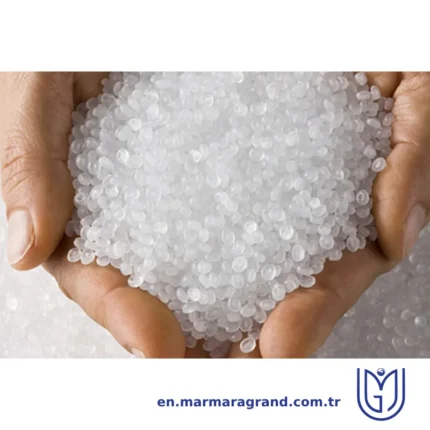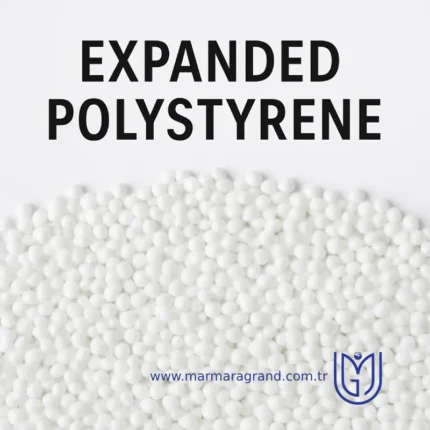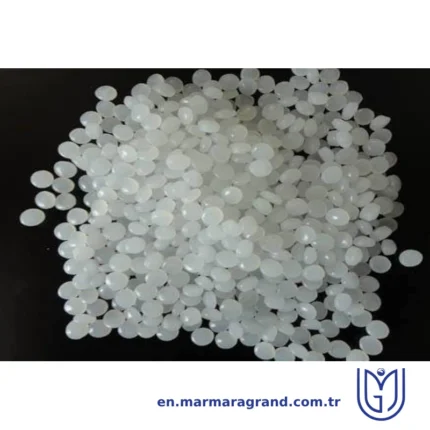Bottle Grade
Polyethylene Terephthalate (PET) is a versatile thermoplastic polymer widely used in the packaging industry, particularly for bottle manufacturing. PET bottle-grade resin is a specialized type of PET formulated to meet the requirements of beverage, food, and pharmaceutical packaging. One of the key advantages of PET bottle-grade material is its food-safe quality, ensuring compliance with global regulatory standards like those set by the FDA (Food and Drug Administration) and EFSA (European Food Safety Authority). With growing concerns about sustainability, PET bottle-grade materials are evolving to incorporate higher percentages of recycled content while maintaining their structural integrity and safety.
1.StructurePET (Polyethylene Terephthalate) is a semi-crystalline thermoplastic polymer belonging to the polyester family. The structure of PET bottle-grade material is based on long-chain polymer molecules formed through polycondensation of terephthalic acid (TPA) and ethylene glycol (EG). The repeating unit in PET is: {-O-CH_2-CH_2-O-CO-C_6H_4-CO-} This structure consists of:
- Ester groups (-COO-) → Provide flexibility and durability
- Benzene rings (C₆H₄) → Contribute to rigidity and strength
- Ether bonds (-O-) → Help in processability and thermal stability
2.PropertiesPET (Polyethylene Terephthalate) bottle-grade resin possesses a unique combination of physical, mechanical, thermal, chemical, and barrier properties, making it the preferred material for beverage and food packaging. It is highly transparent, lightweight, and has a smooth surface, providing an attractive and glossy finish for bottles. Mechanically, PET is strong, tough, and resistant to impact and stress-cracking, ensuring durability during handling and transportation. Its flexibility allows easy molding into various bottle shapes while maintaining high stiffness for structural integrity. Thermally, PET has a glass transition temperature of approximately 75–80°C and a melting point of around 250–265°C, making it stable under moderate heat conditions. Chemically, it exhibits excellent resistance to acids, oils, and solvents while maintaining hydrolytic stability in humid environments. Additionally, PET is non-toxic and food-safe, meeting regulatory standards such as those set by the FDA and EFSA. Its superior barrier properties help preserve the quality of packaged products by limiting oxygen and carbon dioxide permeability and preventing moisture absorption.A key advantage of PET bottle-grade material is its recyclability, as it is 100% recyclable and can be processed into recycled PET (rPET), promoting sustainability and reducing environmental impact. These properties collectively make PET an ideal choice for water bottles, soft drink containers, juice packaging, and other consumer goods that require clarity, strength, and food safety.
3. Applications of Bottle Grade PETBottle-grade PET is used across multiple industries due to its versatility and safety.
1. Food & Beverage Industry
Soft Drink & Water Bottles – Carbonated and non-carbonated beverages Dairy & Juice Containers – Milk, yogurt drinks, and fresh juices Edible Oil & Condiment Packaging – Cooking oils, sauces, and vinegar2 Pharmaceutical & Healthcare
Medicine Bottles – Liquid syrups and vitamin supplements Personal Care Packaging – Shampoo, lotion, and cosmetic containers3 Industrial & Chemical Applications
Household & Industrial Chemicals – Detergents, cleaning agents, and solvents Laboratory Containers – Sterile packaging for chemicals and reagents4 Sustainable Packaging & Recycled PET Products
Recycled PET Bottles – Used in textiles, automotive parts, and reusable packaging Eco-Friendly Packaging – Biodegradable and sustainable bottle solutions4. Advantages of Bottle Grade PETBottle-grade PET offers multiple benefits, making it the preferred material for packaging. Cost-Effective: Lower production costs compared to glass and metal Shatterproof & Durable: Reduces breakage risks in transportation and usage Lightweight: Decreases shipping weight and carbon footprint Versatile & Moldable: Easily shaped into different bottle designs Safe for Food Contact: Approved by FDA and EFSA for direct food and beverage use Eco-Friendly: Supports recycling and sustainable initiatives
5. Disadvantages of Bottle Grade PETDespite its benefits, bottle-grade PET has some drawbacks: Environmental Concerns: Improper disposal leads to plastic pollution Heat Sensitivity: Deforms at high temperatures, limiting hot-fill applications Gas Permeability: Less effective than glass in preventing oxygen ingress Chemical Leaching (Low Risk): May release trace amounts of antimony oxide under extreme conditions Recycling Challenges: Requires advanced sorting and processing to maintain quality
Expanded PolyStyrene (EPS)
Expanded Polystyrene (EPS) is a rigid, closed cell, thermoplastic foam material produced from solid beads of polystyrene, which is polymerised from styrene monomer and contains an expansion gas (pentane) dissolved within the polystyrene bead. Each solid polystyrene bead contains small amounts of gas which expand when heat (in the form of steam) is applied, thus forming closed cells of EPS. These expanded cells occupy approximately 40 times the volume of the original polystyrene bead, and so with a second heat treatment using a mould, large EPS blocks can be moulded into specific customised shapes.
Structure
The structure of Expanded Polystyrene (EPS) consists of tiny, closed-cell foam beads made of polystyrene. These beads are expanded using heat, causing them to expand up to 50 times their original size. Also each bead contains air pockets.Properties
Expanded polystyrene (EPS) is found to be the most commonly used polymer core. This is because it is lightweight, resistant to moisture and also it has a long life. Studies have concluded that softening of EPS starts when exposed to temperatures ranging from 100°C to 120°C. In the process of flashovers, EPS melted about 160°C and then vaporized, producing poisonous gases at a temperature of 275°C. EPS is an inert, low density hydrocarbon-derived thermoplastic which contains several spherical beads with 2 percent polystyrene and 98 percent airApplications
Building and Construction-EPS is widely used in the building and construction industry due to its insulation properties. It can be used:- As insulated panel systems for facades, walls, roofs and floors in buildings.
- As flotation material in the construction of marinas and pontoons.
- As a lightweight fill in road and railway construction.
- in the packaging of foodstuffs such as seafood, fruit, and vegetables.
- to produce food service containers like drink cups, food trays, and clamshell containers.
Advantages
- lightweight
- water-resistant
- easily manufactured
- Energy Efficient
- high Durability and Longevity
Disadvantages
- vulnerability to compression
- limited fire resistance
- non-biodegradable
Low Density PolyEthylene (LDPE)
LDPE film grade is divided into several types, including general-purpose film, high-transparency film, heavy-duty film, shrink film, and cast film. These materials possess superior physical and mechanical properties, along with high chemical stability and excellent electrical insulation. They also feature low water vapor permeability and outstanding processability, making them ideal for various applications. Films made from these resins provide exceptional clarity and strong resistance to aging, ensuring durability and long-lasting performance.
StructureLDPE (Low-Density Polyethylene) film grade is a thermoplastic polymer made from ethylene monomers (C₂H₄) through a high-pressure polymerization process. Its molecular structure is characterized by high branching, which gives it its unique properties. Key Structural Features: Highly Branched Polymer:
- LDPE has short-chain and long-chain branches, preventing tight packing of polymer chains.
- Due to branching, LDPE has low crystallinity (~40–50%), making it soft and transparent.
- It is more flexible and stretchable than HDPE (High-Density Polyethylene).
- LDPE has a broad molecular weight distribution, contributing to good melt strength and processability in film extrusion.
PropertiesLow-Density Polyethylene (LDPE) film grade is a highly flexible and lightweight material known for its excellent elongation, impact resistance, and transparency. With a density ranging from 0.915 to 0.930 g/cm³, it offers good clarity but can appear slightly hazy. It has a relatively low melting point of around 105–115°C and remains flexible even at sub-zero temperatures, making it suitable for various applications. LDPE exhibits moderate tensile strength (8–17 MPa) and exceptional elongation at break (100–600%), ensuring durability and resilience. While it provides a good moisture barrier, its gas barrier properties are poor, allowing oxygen and CO₂ to pass through. Chemically, LDPE resists acids, bases, and alcohols but is vulnerable to hydrocarbons. Its excellent heat-sealing properties make it ideal for packaging applications, including food wrap, shrink films, and shopping bags. Additionally, it is widely used in agricultural films, protective industrial films, and medical applications such as IV bags and tubing. LDPE is typically processed through blown or cast film extrusion, operating within a temperature range of 160–220°C. However, due to its susceptibility to UV degradation, stabilizers are often added for outdoor applications. Overall, LDPE film grade is a versatile and cost-effective material, valued for its flexibility, sealability, and ease of processing.
Applications
- Packaging
- Used for manufacturing flexible packaging films (e.g., shopping bags, wraps, and pouches).
- Food packaging, including wraps, freezer bags, and shrink films.
- Industrial packaging for wrapping materials, products, and protective covers.
- Agricultural Use
- Greenhouse films for agricultural purposes, creating protective environments for plants.
- Mulch films for soil coverage and weed control.
- Consumer Products
- Plastic bags for grocery stores, retail packaging, and garbage bags.
- Cling films for food preservation and covering items.
- Disposable liners for various containers.
- Construction
- Vapor barriers in buildings, preventing moisture from seeping into structures.
- Covers for construction materials during storage or transportation.
- Medical Use
- Sterile packaging for medical devices, equipment, and pharmaceuticals.
- Medical drapes and covers.
Advantages
- Flexibility
- LDPE film is highly flexible and can be stretched without breaking.
- Transparency
- Offers high clarity and transparency, making it ideal for packaging.
- Chemical Resistance
- Good resistance to chemicals, oils, and greases.
- Low Cost
- Relatively affordable material, making it a cost-effective solution for many applications.
- Ease of Processing
- Easy to process with methods like extrusion, injection molding, and blow molding.
- Lightweight
- Lightweight material, reducing transportation and handling costs.
- Moisture Resistance
- Water-resistant properties, providing good moisture protection in packaging.
Disadvantages
- Low Strength
- Low tensile strength and can tear easily under stress or load.
- Limited Heat Resistance
- Has a low melting point, which limits its use in high-temperature environments.
- Environmental Impact
- Non-biodegradable and contributes to plastic pollution if not recycled properly.
- Poor UV Resistance
- Can degrade when exposed to UV light, leading to brittleness and color fading over time.
- Low Barrier Properties
- Not ideal for barrier applications like gas or vapor resistance compared to other materials like BOPP or PET.










